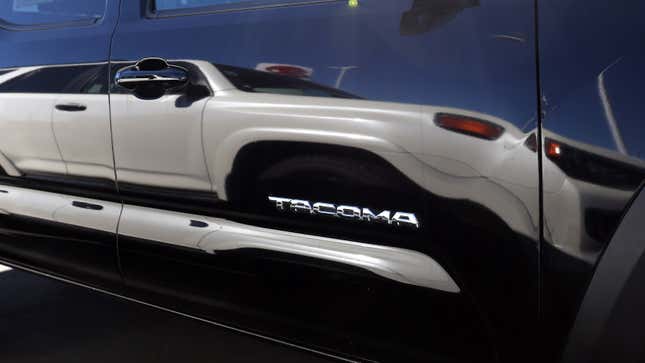Here at Jalopnik, we know there’s nothing wrong with keeping a beloved old beater running for mile after mile, and we regularly celebrate high mileage heroes. Now, it turns out the rest of America is catching onto this way of thinking as the savings of holding onto an old car for longer begin mounting up.
Drivers across the country are increasingly holding onto their cars for longer than ever, with an increasing number hitting more than 100,000 miles in their cars, according to a new report from the Wall Street Journal. The trend comes as drivers realize the savings to be had by simply not replacing their car every five years. As the site explains:
Jeremy Morris is used to friends making fun of the Toyota Tacoma he has driven for 24 years. He still insists it was one of the best money decisions of his life.
The 45-year-old financial adviser in Coeur d’Alene, Idaho, estimates he saved more than $100,000 by never replacing the pickup. His ballpark figure factors in what he would have spent on a new car every five years, minus the roughly $20,000 he paid for repairs and upkeep over 300,000 miles.
The decision to hold onto cars longer isn’t just one being made by Toyota owners and weird old car fans. In fact, the average age of a car on U.S. roads has now risen to 12.5 years after six straight years of increases, reports the WSJ. In fact, cars over 10 years old now account for more than 40 percent of the cars on America’s roads.

What’s more, people are still driving their cars as they get older, and the WSJ spoke with a mechanic who reported seeing more and more cars surpassing six-figure miles. As the post adds:
Tom Piippo once put up pictures of customers and their vehicles on the wall of his repair shop in Rudyard, Mich., after odometers reached 200,000 miles. The tradition stopped years ago after the milestone became commonplace.
“I ran out of wall,” said Piippo, whose Tri-County Motors regularly sees vehicles in the 200k club.
But why the sudden desire to hold onto our cars for longer? It all comes down to spiraling repair costs and higher insurance premiums for newer vehicles, according to the WSJ. What was once a simple fix on older models, can now require sensor replacements, new screens and all kinds of electronics fixes that can see the bill at your local shop rise and rise.
Additionally, as the average new car price rises Stateside, so too does the length of car loan agreements. This means that people are already holding onto their cars for six, seven or even eight years fresh from the forecourt. Couple that with the sky-high dealer markups some are charging for a new car today, is there any wonder people are driving their cars till the wheels fall off?

